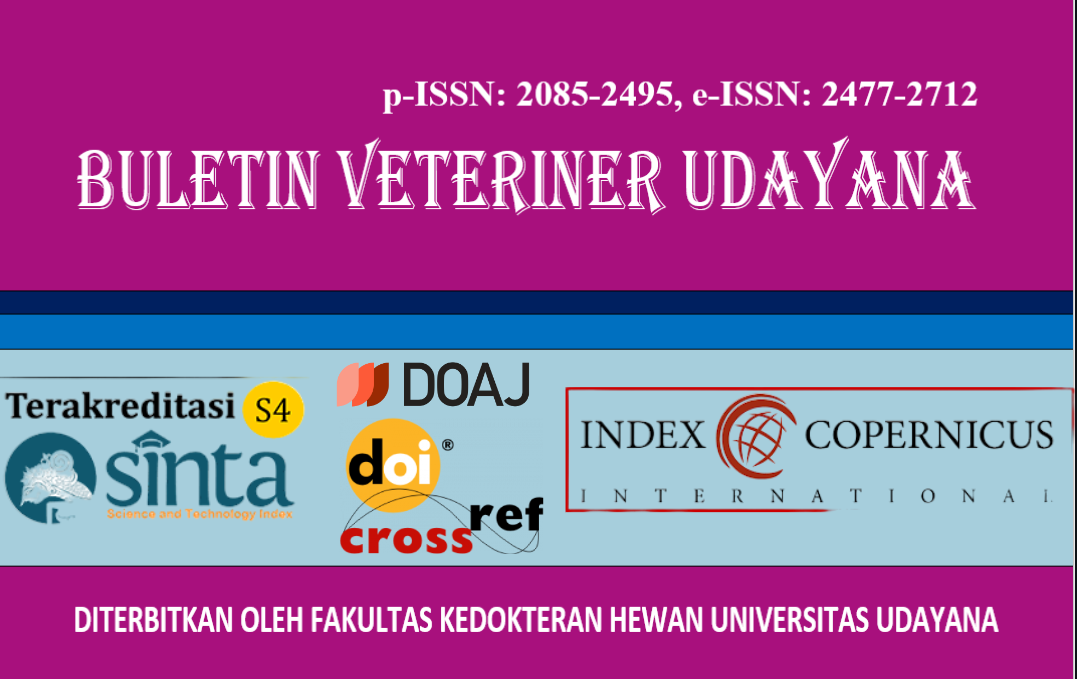ASCITES DUE TO LIVER DYSFUNCTION IN DOMESTIC CATS
DOI:
https://doi.org/10.24843/bulvet.2024.v16.i06.p15Keywords:
cat, ascites, liverAbstract
Ascites can be caused by various factors, generally impaired heart, liver, kidney function, parasitic infestation, and malnutrition. Liver dysfunction is classified as prehepatic, hepatic, and posthepatic. This case study aims to determine how to diagnose and treat ascites cases due to liver dysfunction in cats. A domestic cat named Memeng, a 3-year-old female weighing 1.8 kg, complained of an enlarged abdomen for four months. On clinical examination, abdominal distension was found due to fluid accumulation accompanied by abdominal vein distension, when palpating the abdomen, the liver felt hard and protruding so that the abdomen looked asymmetrical between the two sides of the cat's abdomen, rapid breathing and unbalanced walking. Hematology examination, FIPV kit test and blood chemistry and X-rays were performed twice on the 2nd and 14th days. Hematology examination showed that the case cat had microcytic hypochromic anemia, leukocytosis, neutrophillia, monocytosis, and thrombocytopenia. The FIPV kit test showed negative results. The results of the blood biochemistry examination on the 2nd day showed an increase in Globulin, Alanine aminotransferase, Aspartate aminotransferase, Amylase and a decrease in Albumin values. The blood biochemistry examination on the 14th day showed normal results in all indicators. The results of the X-ray examination on the 2nd day showed radioopacity in the abdominal region indicating fluid accumulation so that the organs were not visible. The X-ray examination on the 14th day showed that the organs in the abdominal region were slightly visible indicating reduced fluid accumulation. Based on the anamnesis, clinical examination, and supporting tests, the case cat was diagnosed with ascites due to impaired liver function with a dubious prognosis. The case cat was treated with Furosemide, Ringer Lactate, Cefotaxime, Dexamethasone, Hematodin, Nutramarin and Albusmin. The cat's food was replaced with Royal canin hepatic. The results of the case cat's treatment improved with reduced fluid in the abdomen, blood chemistry results returned to normal, the stomach began to look smaller, both sides of the abdomen returned to being symmetrical, abdominal vein distension decreased, breathing was normal, walking was balanced, the cat was active again and muscle mass increased. Advice for owners to regularly evaluate their cat's health with a veterinarian.




